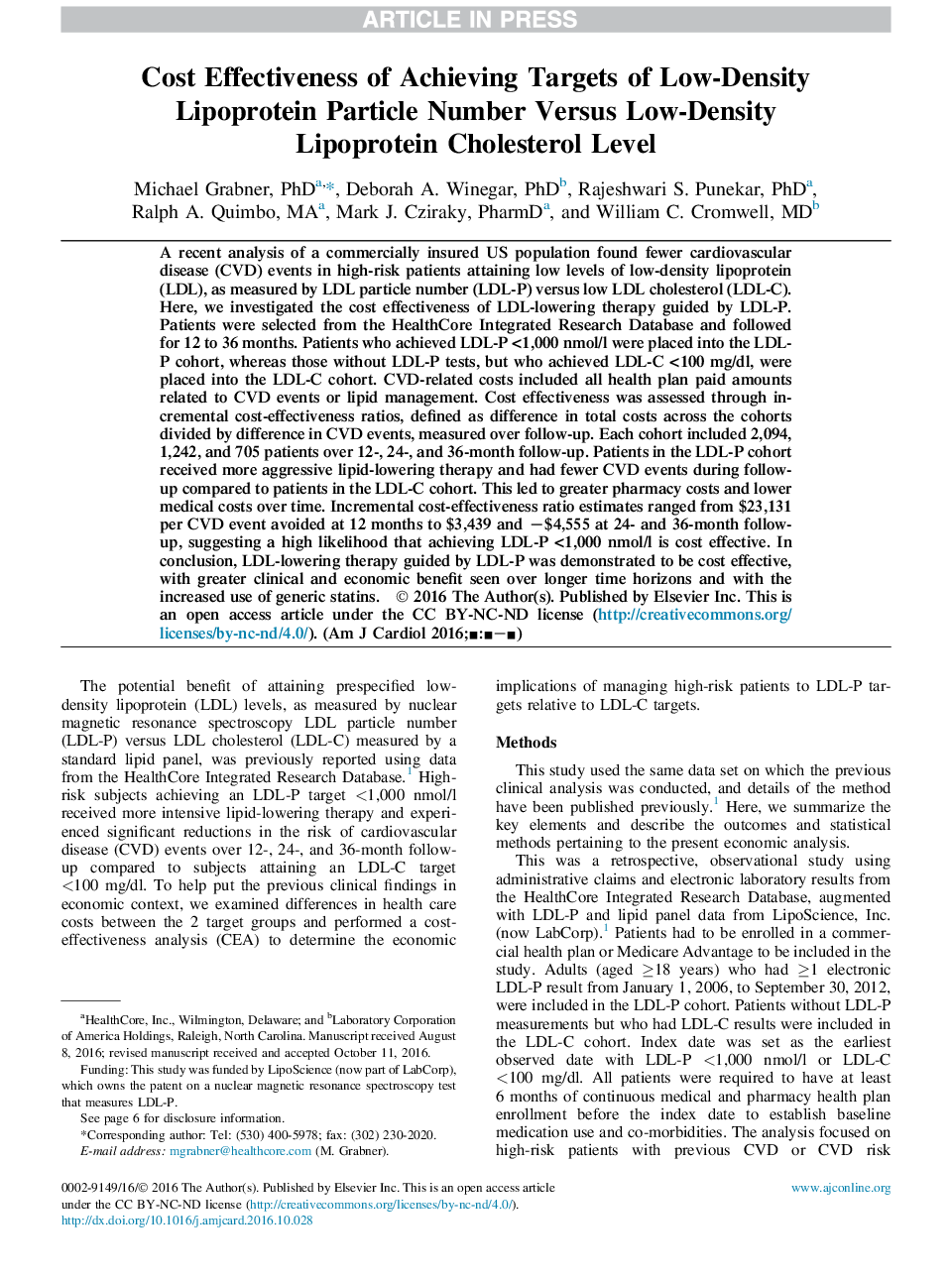| Article ID | Journal | Published Year | Pages | File Type |
|---|---|---|---|---|
| 5595363 | The American Journal of Cardiology | 2017 | 6 Pages |
Abstract
A recent analysis of a commercially insured US population found fewer cardiovascular disease (CVD) events in high-risk patients attaining low levels of low-density lipoprotein (LDL), as measured by LDL particle number (LDL-P) versus low LDL cholesterol (LDL-C). Here, we investigated the cost effectiveness of LDL-lowering therapy guided by LDL-P. Patients were selected from the HealthCore Integrated Research Database and followed for 12 to 36 months. Patients who achieved LDL-P <1,000 nmol/l were placed into the LDL-P cohort, whereas those without LDL-P tests, but who achieved LDL-C <100 mg/dl, were placed into the LDL-C cohort. CVD-related costs included all health plan paid amounts related to CVD events or lipid management. Cost effectiveness was assessed through incremental cost-effectiveness ratios, defined as difference in total costs across the cohorts divided by difference in CVD events, measured over follow-up. Each cohort included 2,094, 1,242, and 705 patients over 12-, 24-, and 36-month follow-up. Patients in the LDL-P cohort received more aggressive lipid-lowering therapy and had fewer CVD events during follow-up compared to patients in the LDL-C cohort. This led to greater pharmacy costs and lower medical costs over time. Incremental cost-effectiveness ratio estimates ranged from $23,131 per CVD event avoided at 12 months to $3,439 and â$4,555 at 24- and 36-month follow-up, suggesting a high likelihood that achieving LDL-P <1,000 nmol/l is cost effective. In conclusion, LDL-lowering therapy guided by LDL-P was demonstrated to be cost effective, with greater clinical and economic benefit seen over longer time horizons and with the increased use of generic statins.
Related Topics
Health Sciences
Medicine and Dentistry
Cardiology and Cardiovascular Medicine
Authors
Michael PhD, Deborah A. PhD, Rajeshwari S. PhD, Ralph A. MA, Mark J. PharmD, William C. MD,
